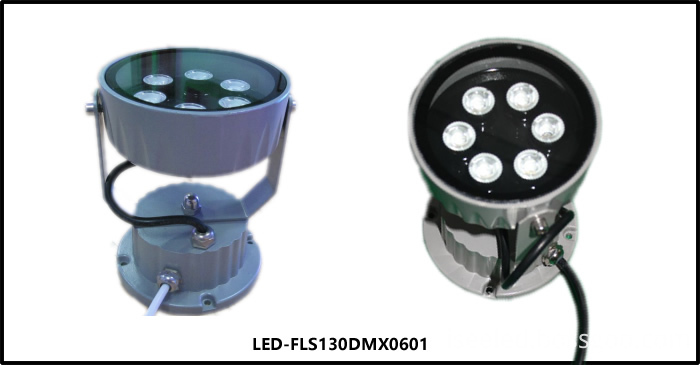The seven technologies that will change the way of life in 2015
As we all know, the speed of advancement of science and technology is always exponential, but sometimes its evolution is actually under our eyes, but we have not noticed it.
In 2015, new technologies and innovations in areas such as artificial intelligence, robotics, augmented reality, the Internet of Things and 3D printing are likely to surprise the market and revolutionize our social life.
These technologies are already integrated into our society, changing the way we drive, manage our homes, work, communicate and consume. However, further innovation will greatly enhance this trend, and this is very worthy of our close attention in the new year.
Internet of Things
In 2014, the Internet of Things finally became the focus of everyone's talks. This should be thanks to Google (GOOG), the company's $3.2 billion acquisition of smart room temperature regulator manufacturer Nest Labs, which made the Internet of Things officially mainstream.
Ross Rubin, principal analyst at technology consultancy ReTIcle Research, said that despite AT&T Inc. (T) and Vivint Solar Inc. Companies such as VSLR still have a fairly large market for hosted, all-in-one automation products, but a variety of individual smart products are likely to flood the market – like a lot of highly complex jigsaw pieces, waiting for us to It is integrated.
“Smart homes will be piece together.†He explained, “doorbells, thermostats and lighting will gradually become accessories for mobile phones.â€
The recently unsatisfactory mobile phone company, BlackBerry (BBRY), recently announced that they intend to showcase their Internet of Things program at the Consumer Electronics Show in Las Vegas in the first week of January, hoping to use the traditional BlackBerry [microblogging] Develop new business areas beyond the product.
Automotive electronics and driverless technology
Accompanied by the Internet of Things, automotive electronics technology is also evolving, and the next phase of the goal is clearly to achieve complete driverless. Next year, automakers will continue to digest and absorb new technologies into their products, especially on dashboards.
SynapTIcs Inc. (SYNA) is one of the key players in this field. Rick Bergman, the chipmaker's chief executive, told MarketWatch that the mobile market will be SynapTIcs' "next major growth area." He said that there are still many areas where interface improvements will be made in the near future, such as upgrading traditional dashboards to advanced touch screens. Finally, the company hopes to introduce its fingerprint identification technology into the car for identity authentication and security.
Roger Kay, the founder of consulting firm Endpoint Technologies, imagines that in the future world, each car's windows are 360-degree screens, allowing people to watch movies on the road, while the car drives autonomously and takes them to the destination. Ground. Is the traffic jam at the intersection in New Jersey? It doesn't matter, let the window screen take you to the Swiss Alps, cool down, or let it play a streaming movie, because your car must have its own broadband. Of course, this will certainly not be a day or two. Kay estimates that it will take ten years or more.
“The movement in the automotive industry is really not fast,†Kay stressed. “But they are getting closer to the right goal every year.â€
Google [Weibo] announced that they have already built a fully functional driverless car that will be on the streets of Silicon Valley early next year. Of course, driverless cars really enter our daily lives, and there are a series of legal obstacles that need to be removed.
Wearable device
Google can make waves on all fronts of high-tech. In 2012, it was their release of Google Glass that made the wearable market begin to take shape. After that, players from all walks of life gradually joined in, making the market appear a hundred flowers. Today, high-tech health bracelets such as FitBit continue to gain favor from consumers who want to keep track of their calorie consumption, but companies like Apple (AAPL) and Sony (SNE) are far from satisfied. I hope to launch a more powerful wearable device trend in 2015.
Rubin predicted: "With the excellent products of Apple Watch and other players, we will see the strong growth of wearable devices."
In the first half of next year, the much anticipated Apple Watch will come to the market. What will happen? Is it another technology take-off (after all, this is Apple), or consumers find that smart watches are actually not the solution they need? It is really interesting. However, Samsung [microblogging] Galaxy Gear did encounter Waterloo.
Augmented Reality
Augmented reality is a technology that combines virtual environments into real-world environments through visual images, and continues to attract developers' interest. In 2015, this technology will usher in the opportunity of a wide range of commercial applications.
Intel (INTC) and Google have reached an agreement that the "brains" of the next generation of Google Glass will no longer be chips from Texas Instruments (TXN), but will be replaced by Intel [microblogging] products. The two companies announced that they plan to promote Google Glass to the corporate market, such as hospital networks and manufacturers. Google has also contacted a large team of developers who hope that the latter will come up with an application that is suitable for the job. Augmented reality can also be used for training, such as simulating emergency situations, space environments, or flight environments.
At the Consumer Electronics Show next month, Sony is expected to launch a head-wearing product similar to Google Glass that can be attached to people's ordinary glasses to present OLED images, videos or text in front of users. According to reports, Sony plans to start mass production of this smart product in 2015.
Virtual Reality
FacebookInc. (FB) Mark Zuckerberg also joined the team of virtual reality fans this year, and began to imagine that one day in the future, people can completely get rid of the material world and completely enter the digital dimension.
In March of this year, Facebook spent $2 billion to acquire Oculus, a virtual reality helmet company, and determined that virtual reality will be the general trend of communication and entertainment in the future. Zuckerberg believes that virtual reality will one day completely surpass the entertainment level. For example, students can take classes in virtual classrooms, and doctors can even use virtual reality technology to consult with the help of complex sensors.
At the same time, Sony, Google and Samsung have shown their interest and want to work with Hollywood to make virtual reality a reality. New Deal Studios and other professional studios have recently started developing 360-degree movies for virtual reality helmets.
3D printing
In 2015, printing objects on demand in the real world will become easier and more widely used. Not long ago, an astronaut printed a pipe wrench using 3D printing technology at the International Space Station. This should be regarded as a major development, marking a move towards a more cost-effective and time-saving space manufacturing industry. An important step.
The 3D printer, which can operate in a weightless state, is from a company called Made in Space, which plans to launch a larger commercial printer next year. The European Space Agency also said that they are planning to launch their own 3D printers next year.
3D printer manufacturers are continually making significant advances, introducing faster, smaller, and more economical products, printing everything from food to organs, revolutionizing our world.
mobile
Of course, among the various possible trends in 2015, the continued deepening of mobile development is certainly one of the most realistic. For the first time in the past year, people spent more time on their mobile phones than personal computers, and the number of people accessing retail websites via mobile phones surpassed personal computers for the first time.
Driven by Apple Pay, mobile payments are expected to see even greater progress in 2015. Within six weeks of the advent of Apple Pay, its market share has reached 1.7% from zero. In 2015, accompanied by eBay Inc. (EBAY) split PayPal, upgrade more fruit powder to Apple Pay-compatible mobile phones, and more small businesses accept Square Up, mobile payments will naturally be rolled out.
Kay said he expects to become the "Mobile Commerce Acceptance Year" next year. Rubin said that Apple Pay makes mobile payment operations much easier, and this obviously helps push merchants to accept smartphone payments.
"It will see significant growth in 2015, and competitors such as Google and Softcard will redouble their efforts." Rubin predicted, "Mobile commerce is about to take off."
LED Spot Light is a led light fixtures, mostly to project a specific project, and low voltage outdoor application. LED spotlighs is different from the LED Flood Light which is smaller can be install in a narrow place. And the 3W Led Spot Light, 6W LED Spot Light is widely use for building and garden lighting decoration.
Photo show of LED Spot light:


LED Spot Light
Led Spot Light,Led Outdoor Spotlights,Led Spotlights,Commercial Led Spot Light
Shenzhen Iseeled Technology Co., Ltd. , https://www.iseeledlight.com